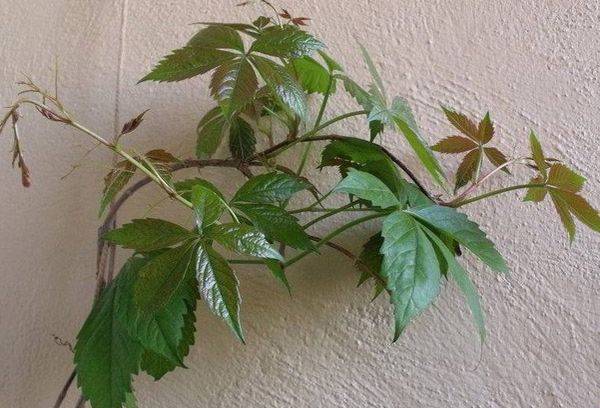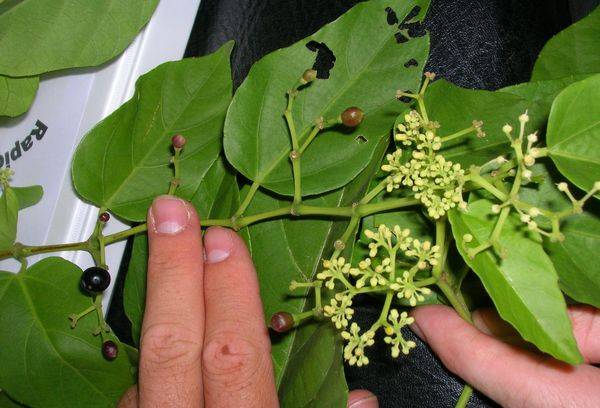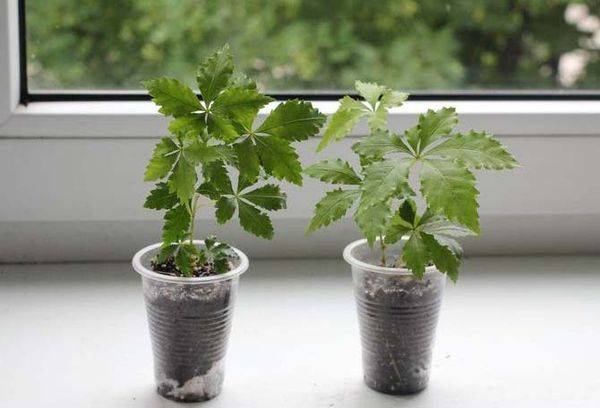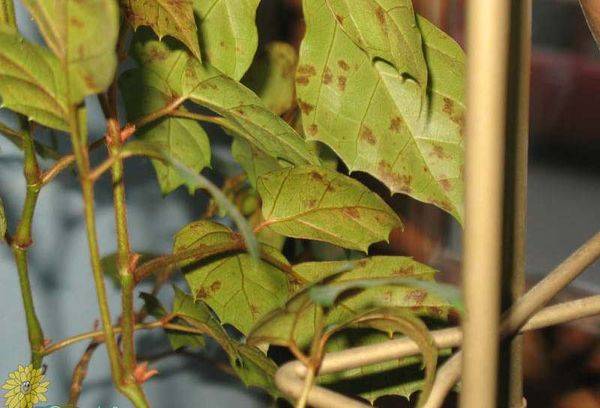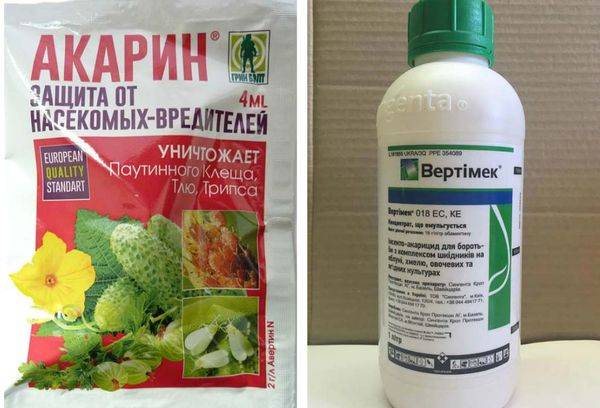How to properly care for cissus at home
Content:
Among unpretentious indoor flowers, an elegant bindweed with a dense crown and beautiful leaves stands out. Many have already guessed that this is homemade grape, cissus: caring for it is absolutely simple, and the appearance of the plant will not leave anyone indifferent.
Description
Cissus is a winding evergreen decorative vine that belongs to the grape family. Due to the similarity of the leaves, the flower is often called a birch or homemade grape.
Under natural conditions, Cissus is common in the tropics and subtropics of Australia and Africa. Thanks to the beautiful carved leaves forming a voluminous crown and beautifully falling from the pot, the flower has gained popularity in indoor floriculture. The plant will decorate a balcony or room in the house, office, public premises.
Cissus shoots sometimes reach a length of 3.5 meters, while the root system of the plant is compact. Young stems are flexible, but they grow stiff as they grow older, covered with a rough bark of gray color, which, over time, crackes and peels off.
Antennas and petioles are located on the internodes of the stem. Often at the ends of the antennae there is an expansion in the form of a circle, the plant uses such a device as suction cups in order to cling to the surface.
The leaves are placed next, have a palmate, lobed or solid plate with a glossy surface. Crown color - bright, green, plain. Rarely, but nevertheless, cissuses are also found with variegated coloring of leaves.
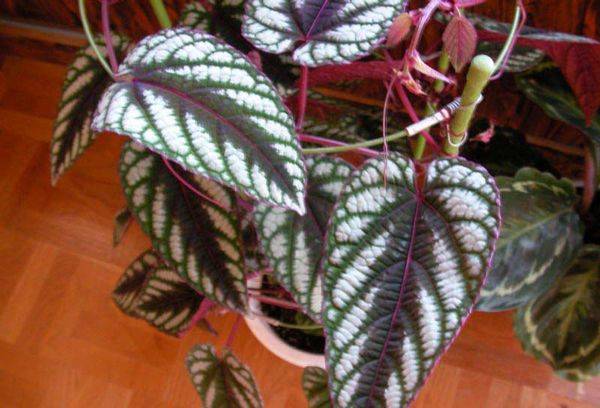
Cissus multicolored (discolore)
At home, the plant blooms in exceptional cases, but this is a variant of the norm and should not cause alarm. Small, nondescript flowers cannot compete in the spectacular appearance of the foliage of the plant.
Kinds
Cissus is represented by a huge number of varieties, there are about 350 of them, but only some of them are grown indoors. The most popular plant species among gardeners:
- Cissus rhomboid - loves a shadow, it is necessary to grow it on a support, shoots grow up to one and a half meters in length.
- Cissus multicolored (discolore) is the most beautiful view. The leaves are green with a purple tint; in winter, the plant drops them. The surface of the sheet plates is glossy. Plants of this species are very demanding on temperature and humidity in the room.
- Cissus antarctic It is a vine growing up to two meters long. The shape of the leaf plates is ovate, notches along the edges. The plant blooms with small green flowers and forms quite edible fruits that taste like grapes.
- Cissus quadrangular has a very unusual appearance due to dense, tetrahedral shoots; in appearance the plant resembles a cactus. Liana branches can reach a length of 1.5 m.
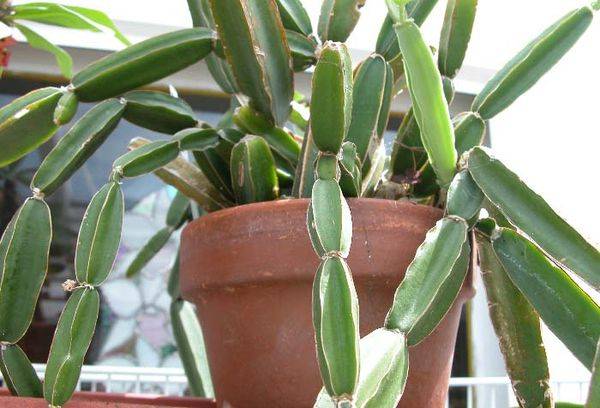
Cissus quadrangular
Illumination and temperature
Cissus is a very unpretentious plant and will grow in almost any conditions: darkness, heat, coolness, excessive light. The flower does not tolerate drafts and sudden changes in conditions. Basic care for a room birch comes down to proper transplanting and watering.
Cissus will grow well on the windowsill of any window, as well as at a considerable distance from natural light sources. The only thing the plant does not tolerate is bright direct sunlight. Ideal for growing - ambient light.
The cissuses Antarctic and multi-colored perfectly develop exclusively in a shaded place and very poorly tolerate direct sunlight. For these species, placement near windows facing east or west would be ideal.
Rhombolist, on the contrary, is very photophilous, and the best option for him is a row with a window facing the south side. The flower will be cozy and on the balcony, but at the same time, the plant should be protected from the wind and direct sunlight.
In winter, the ideal temperature for cissus is in the range from +14 to + 16˚ С, in the summer months - from +18 to +26 degrees. The plant perfectly adapts to the gradual change of heat to cool or heat, can withstand cold in winter up to +10, and in summer - heat up to + 30˚ C. However, sudden changes in the flower will harm.
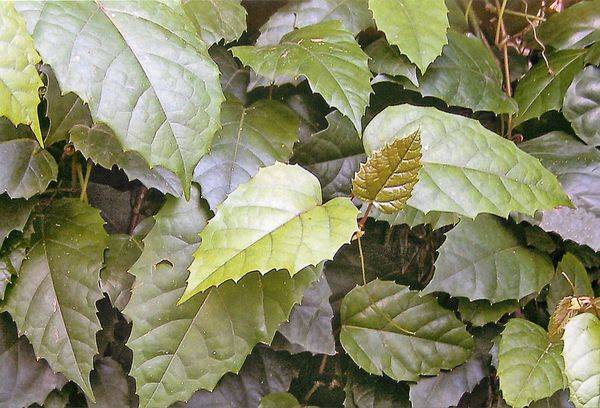
Cissus antarctic
Humidity and watering
Young cissus should be sprayed regularly. Adult plants will not refuse periodic foliar hydration in the summer months, although they may well grow without such an event. In autumn, cissus can not be sprayed, in winter it is necessary from time to time (1 time per month) to arrange for the leaves of souls in order to wash off the dust accumulated on them.
The plant has a large number of leaves, and therefore in the warm season it is able to evaporate a lot of moisture. Therefore, the flower needs abundant watering with exceptionally soft water and spraying. In winter, excess moisture harms cissus - root rot appears, the plant stops growing and fades. In the winter months, watering should be minimal.
Drying of the earthen coma and stagnation of moisture in the pan should not be allowed; the top layer of the substrate (about 1.5 cm) should have time to dry out between waterings.
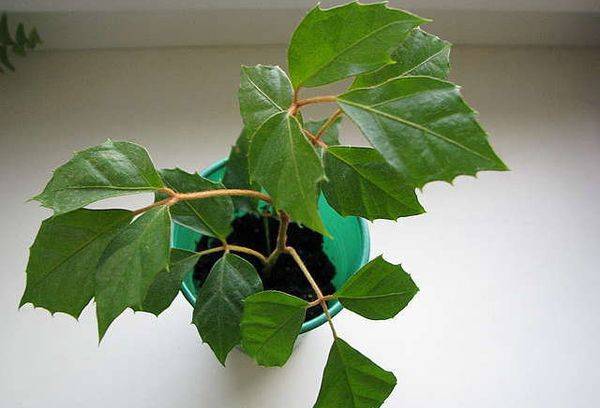
Cissus rhomboid
Soil and fertilizing
Cissus is undemanding to the ground, but optimal options do exist. For example, a mixture of leafy soil, turf land, humus, peat and sand is perfect, all components must be taken in equal amounts. The ideal soil reaction is slightly acidic or neutral.
When choosing the size of the pot should take into account the age of the plant and the degree of development of the roots. For young seedlings, the diameter of the container will be optimal at about 9 cm. As the plant grows, with each transplant, the size of the pot should increase. The ratio of the diameter and height of the flowerpot is standard. Cissus is best planted in hanging planters with a support, for which the shoots will cling as they grow.
As a fertilizer, any composition with a high nitrogen content, suitable for feeding indoor flowers, is suitable (without a sufficient amount of nitrogen, active vegetation is impossible). Cissus is characterized by rapid growth and therefore consumes nutrients very quickly, which depletes the substrate. The application of liquid fertilizers twice a month from April to August will ensure the rapid development of the plant.
Most nutrition is needed for rhomboid cissus, since this species forms a very magnificent, voluminous crown. The plant should be given mineral and organic fertilizers once every two weeks.
Tip
purityis.decorexpro.com/en/ recommends feeding all year round if the temperature and luminosity of the cissus remain constant throughout the whole time. This is due to the fact that under such conditions the plant does not have a resting period.
Often cissus grows very quickly, because pruning and pinching the shoots is a necessary care measure. The time of the main sanitary pruning falls in the spring, this ensures the rejuvenation of the plant. Throughout the year, it is recommended to remove dried, wilted, damaged or diseased twigs, and to produce forming scraps.
Reproduction and transplantation
Reproduction of cissus is carried out by dividing the bush and cuttings. The first method is usually used for spring transplants. It is necessary to get a flower from the pot together with the root system and divide it into several parts, after which they can be planted in separate containers.Each of the parts should include a voluminous root system and an adult, formed shoot.
To obtain a new plant from the stem, it is necessary to cut off the top of the shoot with several leaves and lower it into water or a moist sand-peat mixture. The stalk should remain so until the roots grow, after which it is transplanted into a permanent soil intended for an adult flower.
Tip
Dive several cuttings in one pot at once, this will ensure the splendor and branching of the plant in the future.
Transplantation of young cissus before reaching the age of five is carried out annually, a more adult plant needs to be relocated 1 time in 2-3 years. The best time for the procedure is early spring, and the best way is transshipment.
Pests and diseases
Particularly dangerous for cissus are aphids, claws and spider mites.
The main symptoms of aphid damage:
- leaves turn yellow, become curly;
- sticky insect secretions appear on the leaves (with severe damage).
With a small amount of aphids, it is enough to simply wash off the insects with a soap solution. In case of severe damage, insecticide treatment is necessary; for these purposes, the drugs "Actellic", "Decis", "Aktara", "Tanrek", "Commander", "Fitoverm" are suitable.
Symptoms of a spider mite invasion are small whitish spots on leaf plates, which later become wide bright areas and cause the leaves to dry. The parasites are small and live on the underside of leaflets in a web. The appearance of ticks is favored by rare watering, high temperature and dry air. Treatment with a mineral oil and soap will make it possible to eliminate a slight lesion; insecticides Akarin, Fitoverm, Lightning, and Vermitek will cope with a large number of insects.
In warmth and dampness, cissus can be attacked by multi-claw ticks. On the tops of the shoots, the leaves do not grow, often curl down, coarsen, a brown scab is formed on the petioles. Soap, mineral oil or treatment with insecticides (“Fitoverm”, “Lightning”, “Akarin”, “Vermitek”) will allow to destroy pests.
Diseases of cissus:
- Powdery mildew - a white coating appears on the leaves and petioles. Effective treatment with the preparations "Strobi", "Topaz", "Jet", "Chistotsvet".
- Root rot - the leaves become pale green, with a dull surface, gradually turn yellow and fade, the roots are rotten and look frayed, since the shell lags behind the core. The disease spreads in a substrate with low acidity. As a preventive measure for root rot, the plant should be watered infrequently, but abundantly. As a means of combating misfortune, Alirin-B or Fitosporin-M is used, it is necessary to pour the drug under the root of the plant.
- Angular spotting arises due to inappropriate conditions for growing a flower. Yellowish-brown spots with distinct boundaries form on leaf blades.
Useful Tips
The recommendations of experienced gardeners will help to correctly determine the cause of the problem and eliminate it in a timely manner, thereby ensuring the indoor flower has good growth and excellent appearance:
- The leaves often dry and fall off due to sudden changes in temperature in the room or draft. Move the plant to another place where there will be no direct jets of air and temperature fluctuations.
- The tips of the leaves dry out if the room is very dry air. Spray regularly.
- Shoots become shallow and dry out when the humidity in the room is too high or too low.
- Flower growth is greatly slowed if there are not enough nutrients in the soil. Feed the plant with a solution of complex mineral fertilizers.
- The leaves are curled, dark spots and mold are visible on them - which means that spraying is done too often.
- Leaves lose their color when there is a lack of nutrients in the substrate.Feed the plant with mineral fertilizers.
- Pale leaves indicate too intense illumination. Move the plant pot to a darker place.
- The lower parts of the stems are exposed with a deficit of light. Conduct additional illumination with a lamp or move the flowerpot closer to the window.
- The leaves begin to turn yellow as a result of insufficient watering or the use of hard water for this purpose. Leaves may also turn yellow if the soil mixture is depleted or saline. Water the plant when the top layer of the substrate dries, take soft water for this, feed it in a timely manner and transplant it into fresh soil.
- Brown spots on the leaves indicate a lack of phosphorus in the substrate. Feed the flower with a mineral fertilizer that contains sufficient phosphorus.
